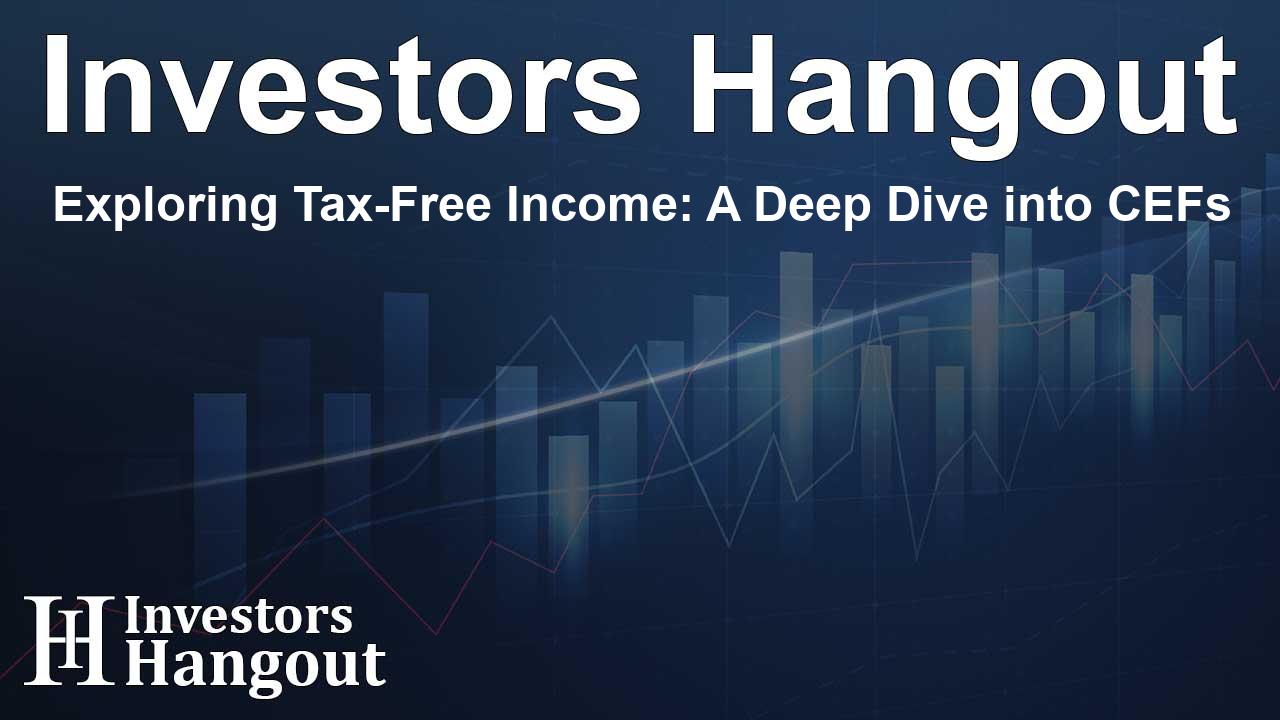Understanding Closed-End Funds (CEFs)
In the world of finance, Closed-End Funds (CEFs) are often celebrated for their lucrative dividends, averaging around 8%. However, investing in a CEF is distinctly different from acquiring regular stocks. Investors must take into account various elements, beyond mere past performance or discounts to net asset value (NAV), which reflects the worth of a fund's portfolio.
Changes in management can have significant implications for CEFs, frequently escaping the attention of the media or Wall Street. For informed investors, these shifts can revitalize a poorly performing CEF, providing an excellent opportunity to invest at a lower price.
Why Some CEFs Go Unnoticed
Interestingly, there are instances when purchasing a so-called 'bad' CEF could be a strategic move, especially if it's undervalued compared to its potential. This might seem unusual, yet if a subpar performer is considerably discounted, it may present an attractive buying opportunity.
Taking a comprehensive approach by evaluating factors such as management efficiency, fee structures, and the economic environment can guide you in selecting quality funds.
For this discussion, we'll examine two municipal bond CEFs that offer tax-free dividends, particularly appealing for many investors. These funds are great case studies on how various factors can influence the overall performance and suitability of CEF investments.
First up: PIMCO Municipal Income Fund II (NYSE: PML) boasting a 5.5% yield, and the BlackRock Municipal Income Fund (NYSE: MUI) with a slightly lower yield of 5.3%. With both funds managing assets exceeding $200 million in recent years, they are the top performers in the municipal bond sector.
Evaluating Past Performance
Interestingly, even the higher-yielding MUI has demonstrated lackluster performance with only 8% returns over the last five years, reflecting the broader challenges faced by municipal bonds. It highlights the fact that choosing the right asset class significantly impacts both past results and future forecasts.
When assessing mutual funds, many focus heavily on fee structures without realizing that lower costs don't always correlate with superior returns in the CEF space. For instance, while PML charges 2.28% in fees, MUI has a considerably higher fee at 3.94%. Unpacking these numbers reveals that the muni-bond index fund, iShares National Muni Bond ETF (NYSE: MUB), while carrying a mere 0.05% expense ratio, has outperformed PML but still fell short against MUI.
The Performance Link: Fees vs. Returns
This phenomenon illustrates the often tenuous relationship between fees and fund performance. Notably, while MUI outpaced its peers over the long haul since the financial crisis, PML has shown weaker results in recent years.
Spotting the Issues with PML
When examining PML’s deteriorating performance, its market price relative to NAV becomes crucial. Unlike ETFs, which tend to align closely with their NAV, CEFs often trade at considerable discounts. MUI has recently benefited from a narrowing discount as market conditions shift favorably, thanks to favorable moves from the Federal Reserve.
Additionally, MUI’s fund is backed by BlackRock, which helped to widen its appeal through strategic buyback announcements, promising better short-term returns for early investors. On the other side, PML was traded at a premium during years when municipal bonds struggled, largely due to geographical investor behavior linked to its California roots.
This led to prolonged premiums despite falling demand, especially amidst a liquidity crunch. Poor market performance in 2022 exacerbated the situation, leading to a decline in PML's premium. At this juncture, the evidence suggests that MUI stands out as a more advisable choice moving forward.
Diversifying Beyond Municipal Bonds
As we move further into diverse investment landscapes, CEFs also provide ample opportunities in different sectors, particularly capitalizing on the tech boom. For instance, CEFs can tap into high-growth areas such as artificial intelligence, yielding an impressive return of around 9.8%.
Investors should not overlook the chance to engage with key players in today’s technology scene, from household names like Microsoft (NASDAQ: MSFT) and NVIDIA (NASDAQ: NVDA) to smaller firms on the tech frontier. All these come with the promise of significant income at fairly discounted prices, presenting a unique entry point for growth-oriented investors.
Utilizing these CEFs allows investors to participate in high-yield sectors while potentially benefitting from upcoming market movements and significant developments in technology.
Frequently Asked Questions
What are Closed-End Funds (CEFs)?
Closed-End Funds (CEFs) are investment funds that issue a fixed number of shares, and they often offer higher dividends compared to traditional mutual funds or stocks, making them appealing for income-focused investors.
Why are dividends from municipal bonds tax-free?
Dividends from municipal bonds are generally tax-exempt at the federal level because they are intended to fund essential services, providing financial relief to investors based on their tax brackets.
How can I evaluate the performance of a CEF?
Investors should consider various factors including past performance, fee structures, NAV comparisons, management changes, and overall market conditions when evaluating CEF performance.
What factors influence the price of a CEF?
The price of a CEF can be influenced by market demand, interest rates, management decisions, asset performance, and overall market conditions.
Can I invest in sectors outside municipal bonds with CEFs?
Yes, many CEFs exist beyond municipal bonds, allowing investors to gain exposure to different sectors, including equities, real estate, and emerging technologies, often with attractive yields.
About The Author
Contact Hannah Lewis privately here. Or send an email with ATTN: Hannah Lewis as the subject to contact@investorshangout.com.
About Investors Hangout
Investors Hangout is a leading online stock forum for financial discussion and learning, offering a wide range of free tools and resources. It draws in traders of all levels, who exchange market knowledge, investigate trading tactics, and keep an eye on industry developments in real time. Featuring financial articles, stock message boards, quotes, charts, company profiles, and live news updates. Through cooperative learning and a wealth of informational resources, it helps users from novices creating their first portfolios to experts honing their techniques. Join Investors Hangout today: https://investorshangout.com/
The content of this article is based on factual, publicly available information and does not represent legal, financial, or investment advice. Investors Hangout does not offer financial advice, and the author is not a licensed financial advisor. Consult a qualified advisor before making any financial or investment decisions based on this article. This article should not be considered advice to purchase, sell, or hold any securities or other investments. If any of the material provided here is inaccurate, please contact us for corrections.

